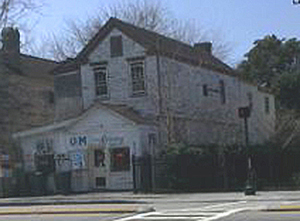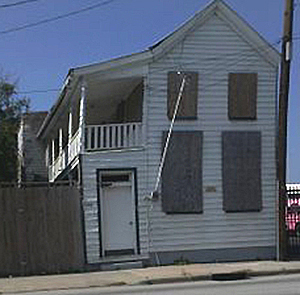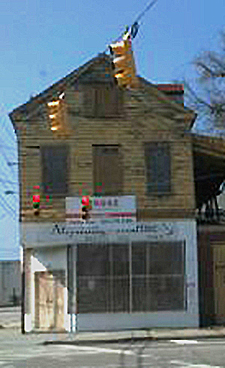The historic preservation movement began as a good idea in this country -- defend the best of the past from the worst of the present. When done right, it's done a lot of good; just visit Grand Central Station in New York, or Center City Philadelphia.
But like a lot of good ideas, the rule makers can undermine the mission by insisting on their rules -- fair and reasonable be damned.
This hasn't always worked out so well: How many historic churches have gone under the wrecking ball because restoring them to preservationist snuff was too expensive?
That phenomenon is alive and well in Charleston, South Carolina, where a mansion in the city's historic district -- built in 2002 to guidelines laid down by the city's Board of Architectural Review (BAR) -- is buried under lawsuits over the rules.
Without getting into the weeds of claims and counterclaims, the BAR's outside counsel, a personable and no doubt capable man named Timothy Domin, has been given the thankless task of insisting that the laws of the BAR trump the laws of physics, and reduced to arguing that the house is in a historic district, the owner knew that when she bought it, the rules are the rules, and she must obey. Underlying all that, of course, is the idea that the rules are all that stand between us and anarchy.
For her part the owner, Melinda Ballard, says the BAR's overstepped its legal bounds, didn't obey its own rules, is being unreasonable in any event, and that if she hadn't done what she's done, she'd have lost the house to rot, mold, and collapse, not to mention the demands of her mortgage lender and insurance company, which both threatened to call her note, and cancel her policy, if repairs weren't made -- pronto.
Actually, the trouble started because of the rules: When it was being designed, the BAR wanted French doors and windows made with divided, single panes of glass, and narrow roof eaves that matched the neighborhood's much older homes. This meant that when it rained, water poured down the outside walls, seeped between the panes of glass, and, as water will, got into the house and behind the brick veneer.
So Ms Ballard got BAR permission to replace said doors and windows for $269,000 -- there were 49 of them. But as contractor sometimes do, it was a shoddy job and made things much worse. The result: Rotting beams, joists and sheathing, and a house that engineers say could collapse.
Ms. Ballard laid out $1.7 million for doors, windows, and temporary marble pediments (meant to divert water from said doors and windows), applied to the BAR for retroactive approval, and got ready to peel away the brick veneer and the sheathing underneath and, to all intents, rebuild the house for roughly $5 million. She originally paid $3 million for it.
A year later the temporary repairs were 99% complete. Not so fast, said the BAR: What about the rules? Last December it turned her down flat and demanded she replace the new doors and windows with others that are almost identical, aside from a few panes of glass.
Cost for that temporary fix of a temporary fix: An estimated $1 million for work that will wind up in the dumpster when the house is finally repaired, and another $1.7 million for the new doors and windows.
After Hurricane Hugo roared through Charleston in 1989, the BAR suspended its rules so homeowners could fix their houses. But despite the large sums Ms. Ballard's spent because of the BAR's own decisions, she's been granted no such courtesy. The BAR's posture seems to be: Do it now and do it our way -- or else.
Meanwhile, the rot keeps rotting. Worse: The moisture created severe mold problems.
And mold is something Ms Ballard knows about: In 1999 she and her family had to flee her house in Dripping Springs, Texas because a slimy black mold, Stachybotrys, had invaded. The Soviet Union used Stachybotrys to make biological weapons. The place was so dangerous no one could walk inside without a hazmat suit. Eventually she had to bulldoze the house.
So it's no surprise Ms. Ballard takes moisture and mold problems seriously, or that she did what she did, and wasn't delighted when the BAR issued a stop work order, threatened to lock her up, and told her to apply for the after-the-fact approval that they turned down.
That was December 22nd of last year -- a nice Christmas present. Meanwhile, the mold problems mean Ms. Ballard's 15-year-old son can't walk in the house, because the mold problems in Texas damaged his lungs. Instead, he's living in a carriage house on the grounds. Whether the boy finds this an unbearable burden is a matter of opinion; it's not very popular with his mother.
Ms. Ballard likes to point out that the BAR is making things tough for a city that makes a lot of its living from tourism. Lining the only road into Charleston, she says -- the first thing tourists see -- are dilapidated buildings, unrepaired because the owners both can't afford to meet the BAR's standards, or just bulldoze them,


And, she adds, at a time when essential City services are under real financial pressure, the city's hiring outside lawyers to fight its citizens instead of fixing the flood-prone city's drainage system, or the uneven bluestone sidewalks that trip visiting pedestrians,
That a fight like this erupted in South Carolina isn't really surprising, when you think about it. South Carolina has a history of getting too excited and taking things too far.

After all, this was the site of the Nullification Crisis of 1832, when South Carolina claimed it had the right to nullify federal law if it felt like it. This was an opinion that Andrew Jackson disagreed with, since the Constitution's Supremacy Clause says otherwise. South Carolina lost that one.
And of course, Fort Sumter lies in Charleston Harbor--if it had been standing in 1861, people could have stood on Ms. Ballard's roof and watched the kick-off of the Civil War.
Both of those events got started as what seemed like good ideas to some people, but ran away with themselves. In the end, both ideas -- and South Carolina -- were brought back to reality. Maybe Ms. Ballard's house can do the same for the historic preservation movement-now drowning in irrational and economically destructive red tape in Charleston.
Visit my Website, Reinbach's Observer.